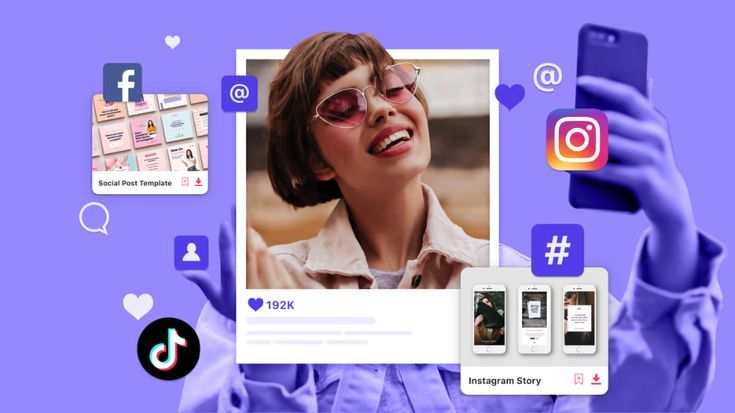In the fast-paced world of social media, viral trends and niche platforms emerge almost daily. One such phenomenon that has sparked both curiosity and criticism is “InfluencersGoneWild.” But what exactly is this trend, and why is it attracting so much attention? This article will dive deep into the origin, nature, controversies, and cultural implications of the “InfluencersGoneWild” movement.
What Is “InfluencersGoneWild”?
“InfluencersGoneWild” refers to a digital trend—often hosted on adult-themed websites or social platforms—that showcases content creators, particularly influencers, in provocative or explicit scenarios. While some see it as a bold celebration of freedom and self-expression, others label it as exploitative or attention-seeking.
Unlike mainstream platforms like Instagram or TikTok, where content is typically curated for mass consumption, InfluencersGoneWild represents the “uncensored” side of influencer culture. It often features risqué photos, behind-the-scenes moments, and content that wouldn’t meet the terms of service of traditional platforms.
The Origin of the Trend
The phrase “gone wild” originally gained traction in the early 2000s with DVD series and websites that encouraged users to upload amateur content. In today’s digital era, the idea has been repurposed and paired with the modern influencer culture—thus, InfluencersGoneWild.
The evolution reflects a broader shift in content monetization, where influencers are leveraging their fame on platforms like OnlyFans, Fansly, or private Discord communities, embracing direct-to-audience models.
Why Influencers Are Participating
There are several reasons why influencers gravitate toward platforms or trends like InfluencersGoneWild:
- Monetization: Many influencers find this kind of content highly lucrative, especially in comparison to traditional ad revenue from YouTube or TikTok.
- Freedom of Expression: With fewer content restrictions, influencers can post what they want without fear of being shadowbanned or demonetized.
- Audience Demand: Some followers actively seek out exclusive or adult-oriented content, creating a market that many influencers are eager to tap into.
For many, it’s not just about shock value—it’s a calculated business decision.
Controversies and Criticism
While InfluencersGoneWild has its fanbase, it has also sparked substantial backlash:
- Exploitation Claims: Critics argue that the trend blurs ethical lines, particularly when it comes to consent, boundaries, and the pressure to perform for clicks.
- Reputation Risk: Some influencers who participate face long-term damage to their public image and brand partnerships.
- Platform Violations: Mainstream social platforms may suspend accounts linked to such content, leading to shadowbans or permanent removal.
Parents, educators, and even some fellow content creators have raised concerns about the normalization of explicit content and its impact on younger audiences.
The Legal and Ethical Gray Area
One of the biggest challenges in navigating the InfluencersGoneWild space is the legal and ethical ambiguity:
- Age Verification: Ensuring all content is created and viewed by adults remains a persistent concern.
- Consent & Distribution: In some cases, images or videos are reposted or shared without proper consent, leading to possible legal action.
- Cultural Standards: What’s acceptable in one country may be illegal or taboo in another, creating tension across global audiences.
The Business Side: Profit Over Principles?
For some influencers, participating in trends like InfluencersGoneWild is not just about content—it’s about building an empire. Subscriptions, digital tips, merchandise, and exclusive content bundles can earn creators thousands of dollars monthly. With platforms taking a small percentage, the direct-to-consumer model has become extremely attractive.
This raises the question: Are we seeing a new wave of entrepreneurs, or is it just a high-stakes popularity game?
Social Commentary and Cultural Impact
InfluencersGoneWild is more than just a provocative label; it represents a cultural shift:
- Redefining Celebrity: Traditional celebrities once relied on talent agencies and production studios. Today, anyone with a phone and a persona can rise to stardom.
- Normalization of Adult Content: The boundaries between entertainment, lifestyle, and adult content are blurring rapidly.
- Power Dynamics: Influencers, once at the mercy of platforms, are now creating their own rules—and platforms—to thrive independently.
Some believe it’s empowering, especially for women and marginalized voices who have historically been excluded from mainstream media. Others argue it reinforces harmful stereotypes and promotes hypersexualization.
The Role of the Audience
An often-overlooked aspect of the InfluencersGoneWild trend is the audience’s role. Followers fuel the demand for uncensored content, share links, and in many cases, provide financial support.
However, this also means the line between fandom and voyeurism gets increasingly thin. The influence of parasocial relationships—where followers feel a personal connection to influencers they’ve never met—cannot be underestimated.
Conclusion: A Trend or a Turning Point?
“InfluencersGoneWild” may seem like just another viral moment, but it’s part of a broader shift in how we consume content, how influencers earn money, and how society redefines norms around privacy, sexuality, and fame.
For some, it’s a form of liberation. For others, it’s a dangerous trend that commodifies the most personal aspects of life. Either way, it signals that the influencer economy is evolving fast—and not always in ways we expect.
Read more: Discover the Magic of Sundae Shower Foam: A Luxurious Skincare Delight
FAQs About InfluencersGoneWild
A1: Not always. The term is often used informally across platforms like Reddit, Twitter (X), or Telegram, but there are also spin-off websites and subscription pages.
A2: Most content is voluntary, but the pressure to stay relevant or earn money can make some feel they have limited choices.
A3: Yes. Posting explicit content or even linking to it can violate terms of service on platforms like Instagram, TikTok, and YouTube.
A4: Sharing without consent is illegal in many countries. Always verify the content’s source and respect copyright and privacy laws.
A5: It highlights the growing appetite for authenticity, rawness, and content that pushes boundaries—whether for better or worse.







